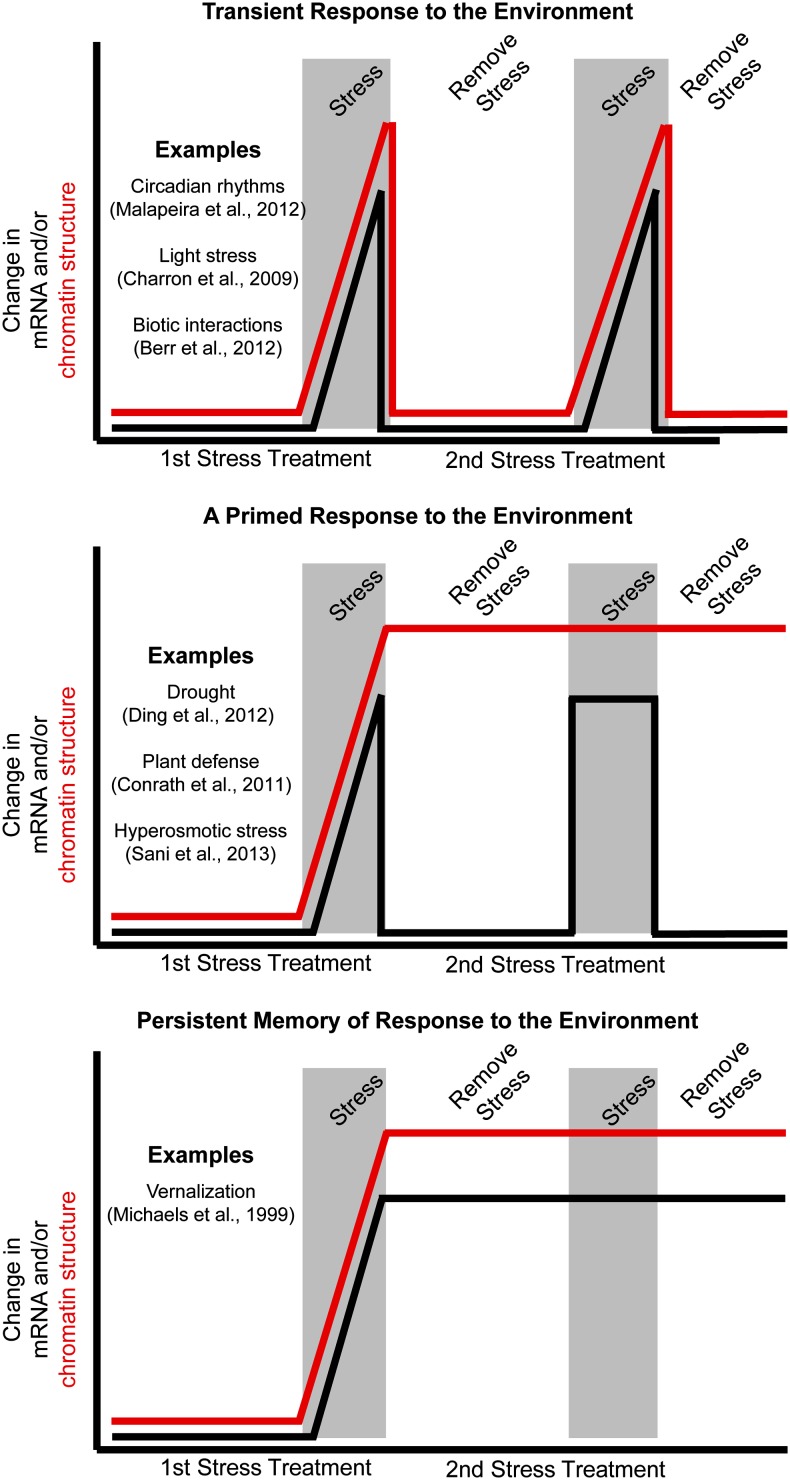Figure 3.
Differential expression and chromatin alterations in responses to the environment. Top, Genes in this class respond transiently and have no memory to the environment by undergoing changes to both the local chromatin state and mRNA levels. Middle, Genes in this class respond to a change in the environment by altering chromatin states and changing mRNA levels. This alteration in chromatin states can persist, which enables a more rapid mRNA response after a subsequent exposure to that environment. Bottom, A memory of the environment is enabled by persistent changes in both gene expression and local chromatin states after exposure to the environment.

